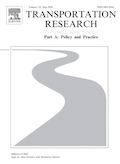Covid-19 and active mobility

The Covid-19 pandemic is one of the most defining events of the last decades, with impacts on almost every aspect of life. In particular, fear of contagion and government interventions to contain the pandemic (e.g., business closures or contact restrictions) significantly decreased people's mobility. In their new article, Alessa Möllers, Sebastian Specht and Jan Wessel look at how the first wave of the pandemic affected walking and cycling in 10 German cities. The article is published in the journal Transportation Research Part A: Policy and Practice.
Using automated counts and weather and calendar data, the authors calculate isolated pandemic effects on walking and bicycling for different levels of government interventions. For pedestrians in pedestrian zones, sharp declines are found in all cities, increasing with higher incidence levels and more stringent government interventions. For cycling, on the other hand, there are ambivalent effects with strong increases in cities with an initially low modal share of cycling, and decreases in traditional bicycle cities.
In addition, the authors use data on changes in overall mobility, which is obtained from mobile phone data, to offset it with the estimated change in bicycle share. This allows to determine for each city the change in the modal share of cycling during lockdown periods of different intensity. In all cities except Münster, this increased significantly, especially in the large cities and during stricter measures. The results imply that there is a large potential for cycling in cities. Policy makers should maintain this trend and promote it through appropriate measures.


